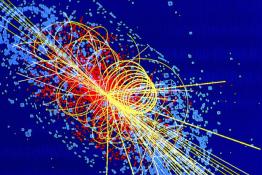Scientific U-turns: eight occasions when science changed its mind
Issue 366 | Page 121 | Published Sep 2017
Description
The Scientific Method is the series of processes by which hypotheses, ideas and theories are shown to be true beyond a reasonable scientific doubt. Most science'fact' is expressed in terms of probabilities rather than certainties. Thus, by means of statistical calculations, researchers aim to determine whether an observed association between two events or characteristics may have occurred by chance (coincidence), whether they frequently occur together (correlation) or whether they occur together because one causes the other (causative relationship). In this article we review the Scientific Method and consider the statistical tests that are applied. We then focus on the occasions when science changes its mind and review eight such occurrences.
More from this issue
There is much more to science education than the requirements demanded by the examination curriculum. This article illustrates one example of an...
Some impressions of the ASE Scotland Annual Conference 2017 from a teacher participant and exhibitor.
Matter can be described and explained in a number of ways, using models of increasing complexity depending on the intended audience. Under the...



